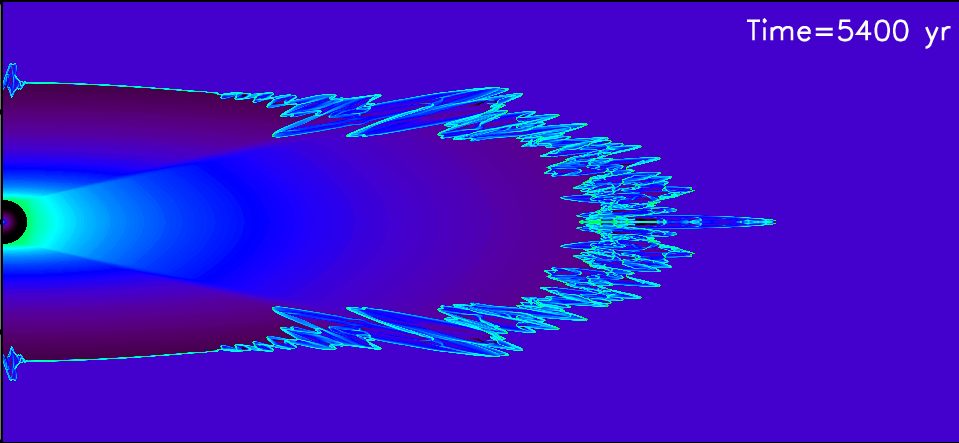
Computer simulations of radio galaxies
A study of the largest objects in the Universe. After the emergence from a super-massive black hole, powerful jets transfer energy into giant lobes and create cavities in the intergalactic medium. How can we interpret these flows? This involves computer simulations of relativistic magnetohydrodynamic flows and their visualisation and analysis. Related simulations of gas flow out of nozzles to model planetary nebula and stellar jets is possible.

A simulated image of a jet from a protostar. The image displays the total emission from a series of lines generated by hydrogen molecules as they rotate and vibrate. These lines lie in a detector filter Band-4 onboard the Spitzer Space Telescope. By comparison, we can determine the best match between observations and simulation and so reveal some of the conditions necessary to produce the type of ejections observed.
For more information please contact Prof. Michael Smith.
Radiative shocks in astrophysics
So much of what we see in the Universe is caused by the conversion of energy within shock waves. These two projects involve a mathematical and numerical study of the variable properties of shock waves associated with protostars, supernovae remnants, planetary nebula and the interstellar medium.

The shell of dense cold shocked gas that separates a molecular wind from a molecular environment. This simulation of a proto-planetary nebula demonstrates that the shell fragments in to fingers and cometary globules see Novikov & Smith 2018, MNRAS 480, 75).
For more information please contact Prof. Michael Smith.
Star-forming clouds
Multi-dimensional computer simulations of gas flows, aimed at understanding how molecules are destroyed in supersonic turbulence. This involves large-scale computer simulations, visualisation and analysis. A related project involves the modelling of the formation of clusters of stars as they emerge out of giant molecular clouds.
For more information please contact Prof. Michael Smith.